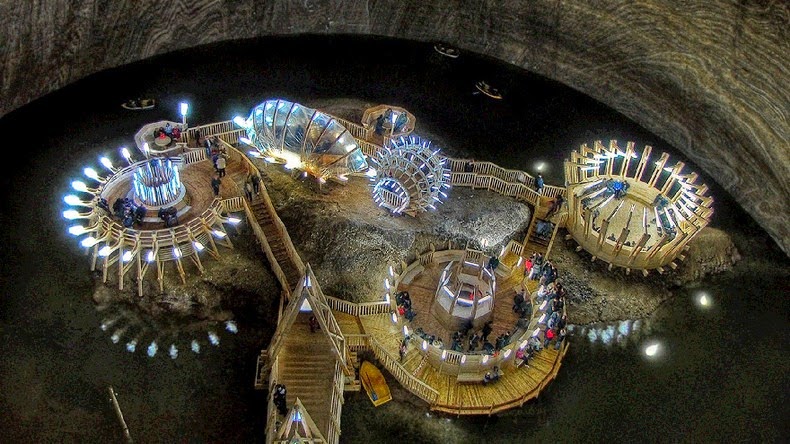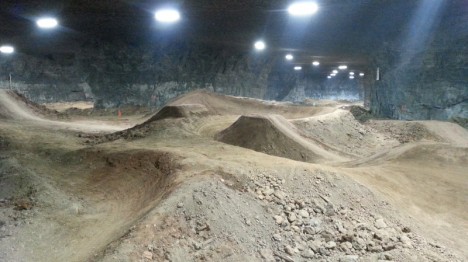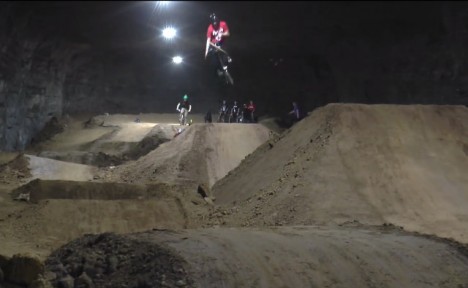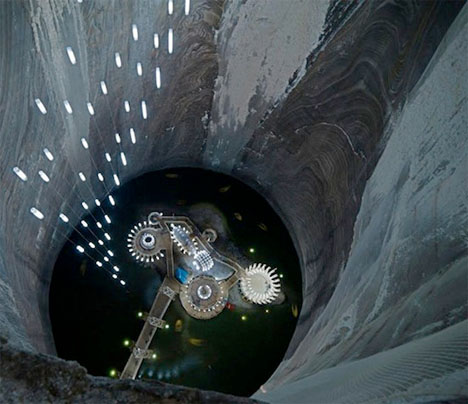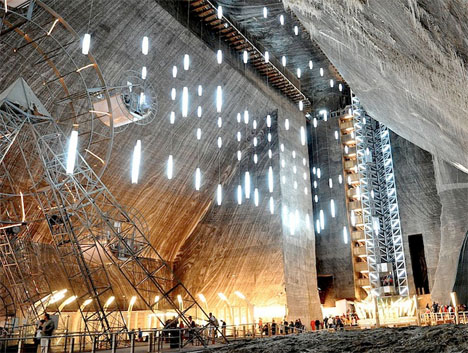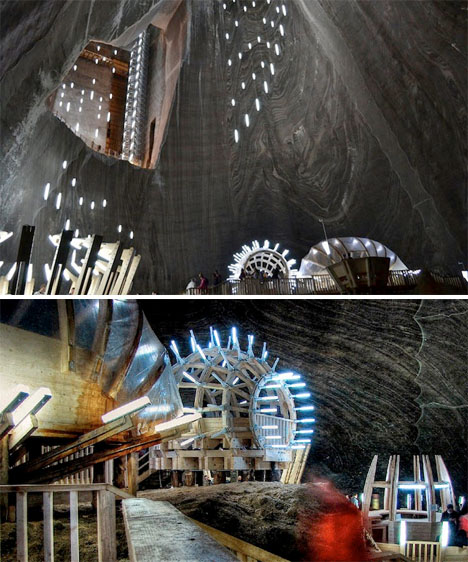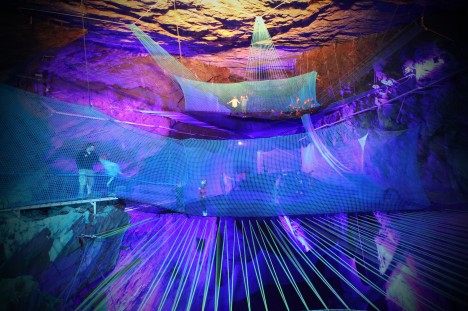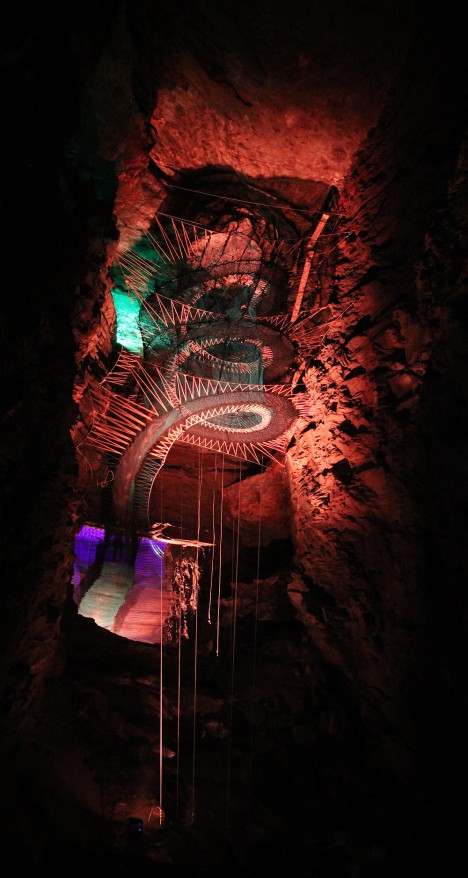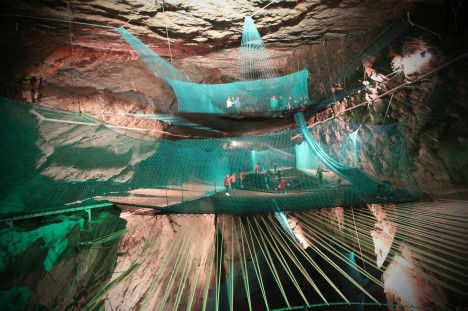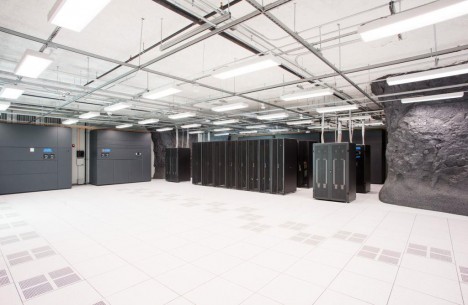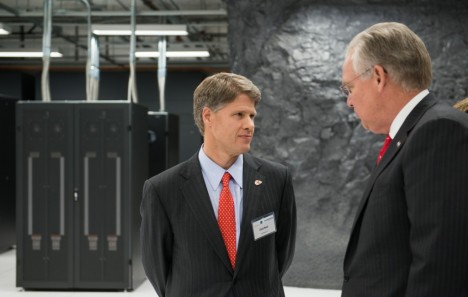Abandoned subterranean pits once used to mine everything from gold to salt have been reclaimed as theme parks, restorative spas for asthmatics, data centers, cathedrals and even the world’s largest underground bike park. These 12 projects reclaim disused mines both above and below the surface of the earth, restoring communities devastated by strip mining and making smart use of the secure, insulating properties of subterranean spaces.
Mega-Cavern Bike Park, Kentucky
A former limestone mine 100 feet below the surface of Louisville, Kentucky is now the world’s largest underground bike park at 320,000 square feet. The Mega Underground Bike Park maintains a steady temperature around 60 degrees year-round and features over 45 trails marked for different skills and styles.
Salt Mines to Subterranean Theme Park, Romania
You’ll feel like you’re accessing another world altogether when you ride an elevator nearly 400 feet to the bottom of an old salt mine in Romania, exiting to take in strange architectural shapes set on black bodies of water, dotted with surreal LED lighting and surrounded by soaring cave walls. First excavated in the 17th century, the Turda Salt Mines feature a playground, ferris wheel, mini golf course, sports arena, amphitheater and bowling lanes in addition to views of the restored mining equipment and the cavern itself.
World’s Largest Underground Trampoline in a Slate Mine, Wales
Children and adults alike bounce gleefully upon trampolines suspended from a Welsh slate quarry mining cavern twice the size of St. Paul’s Cathedral. ‘Bounce Below’ is the world’s largest underground trampoline, with a system of bouncy surfaces strung from the walls ascending between 20 and 180 feet from the cavern floor. Ten-foot net walls keep everyone from bouncing right out.
Limestone Mine to Data Center, Kansas City, Missouri
The SubTropolis Technology Center in Kansas City, Missouri is a limestone mine converted to an underground data center, where the limestone walls act as insulation, absorb heat from the equipment and provide natural security. Making use of this existing space saved 3-6 months of construction work; the walls were left raw and very little above-ground architecture was required.
